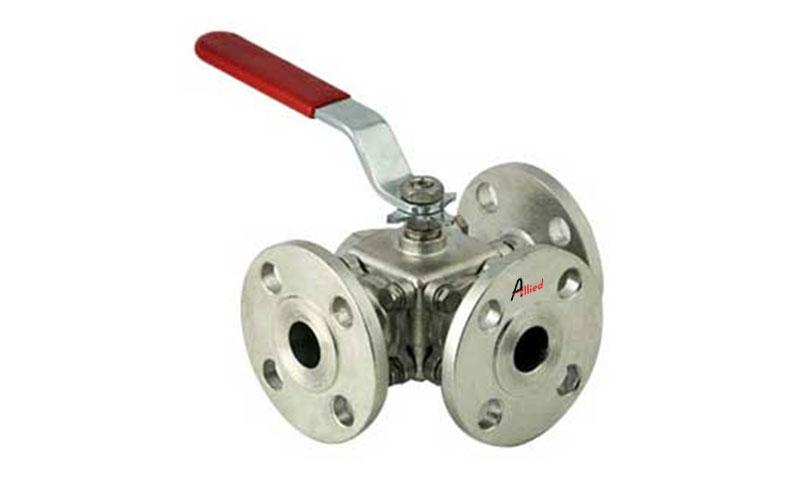The Evolution of Ball Valve Technology

Ball valves have become a cornerstone of modern industrial systems, known for their simplicity, durability, and efficiency in controlling fluid flow. Over the decades, ball valve technology has evolved significantly, adapting to the changing needs of various industries and the demands of increasingly complex applications. This article explores the fascinating journey of ball valve technology from its inception to its current state and beyond.
The Early Days of Ball Valves
The concept of a ball valve is simple, yet revolutionary. The earliest versions of ball valves date back to the mid-20th century, where they were primarily used in plumbing systems. These early designs were rudimentary, often made from brass or bronze, with a solid metal ball to control flow. The simplicity of the ball valve—being a quarter-turn valve that could easily start or stop the flow of liquid or gas—made it an instant success.
However, these early ball valves had limitations. They were prone to corrosion, wear and tear, and could not handle high pressure or temperature applications effectively. Despite these shortcomings, the basic design laid the groundwork for future advancements.
Technological Advancements in Materials
One of the most significant milestones in the evolution of ball valve technology was the development of new materials. The introduction of stainless steel, high-grade alloys, and polymers such as PTFE (Polytetrafluoroethylene) for seats and seals transformed the industry. These materials offered greater resistance to corrosion, higher pressure and temperature tolerances, and a longer service life.
With these advancements, ball valves became more reliable and versatile, finding applications in more demanding industries such as oil and gas, chemical processing, and power generation. The ability to withstand harsh environments without compromising performance was a game-changer for many industries.
Innovations in Design and Functionality
As the demand for more sophisticated flow control solutions grew, so did the need for innovation in ball valve design. The development of trunnion-mounted ball valves, for example, allowed for better handling of high-pressure applications. Unlike floating ball valves, which rely on the fluid pressure to push the ball into the seats, trunnion-mounted valves have additional mechanical anchoring of the ball, reducing operating torque and improving reliability under high-pressure conditions.
Another notable innovation was the introduction of multi-port ball valves. Traditional ball valves typically have two ports (inlet and outlet), but multi-port designs offer three or four ports, allowing for more complex flow paths. These valves are particularly useful in applications that require the diversion or mixing of fluids without the need for multiple valves.
Automation has also played a significant role in the evolution of ball valve technology. The integration of actuators, sensors, and control systems has enabled remote and automated operation of ball valves, making them integral components in modern industrial automation and control systems.
Environmental Considerations and the Future of Ball Valves
In recent years, the focus on sustainability and environmental impact has influenced the design and manufacture of ball valves. The industry has seen a shift towards the development of eco-friendly materials and coatings that reduce the environmental footprint of valve production and operation. Additionally, advancements in sealing technology have reduced leakage rates, contributing to more efficient and environmentally responsible fluid handling systems.
The future of ball valve technology is likely to be shaped by ongoing developments in materials science, automation, and smart technologies. The integration of IoT (Internet of Things) in valve systems is already underway, with smart valves capable of real-time monitoring, diagnostics, and predictive maintenance becoming more prevalent. These innovations will not only improve the efficiency and reliability of ball valves but also extend their lifespan and reduce operational costs.
The Role of Suppliers in the Evolution of Ball Valve Technology
The evolution of ball valve technology would not have been possible without the contributions of suppliers who continuously push the boundaries of what is possible. For instance, a leading ball valve supplier in Ahmedabad has been instrumental in providing advanced solutions tailored to the specific needs of industries. By staying at the forefront of technological advancements, these suppliers ensure that the latest innovations are accessible to a broad range of customers, thereby driving the industry forward.
Whether it's developing new materials, designing more efficient valves, or integrating the latest in automation technology, the role of a ball valve supplier in Ahmedabad is crucial in meeting the evolving demands of the market. As the industry continues to advance, these suppliers will remain key players in the ongoing evolution of ball valve technology.
Conclusion
The evolution of ball valve technology is a testament to the power of innovation and adaptation in meeting the needs of modern industry. From their humble beginnings as simple flow control devices, ball valves have become complex, highly engineered components that play a critical role in a wide range of applications. As new challenges and opportunities arise, the continued evolution of ball valve technology will be essential in ensuring the efficiency, safety, and sustainability of industrial systems worldwide.
Comments